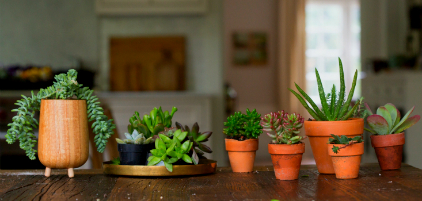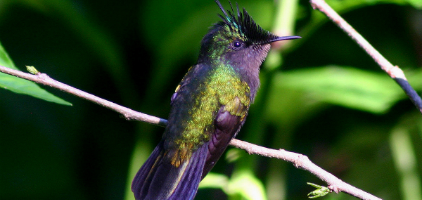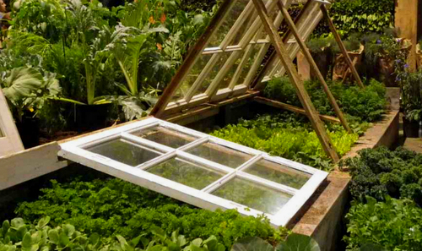
bringing nature, nurseries and gardeners together Feb 14, 2019
|
|
Nursery notes: the amazing TreeFolks will give away 200 free trees on Saturday from 9 a.m. to noon at the Slaughter/ Manchaca HEB. To avoid disappointment, arrive early! treefolks.
At the Lady Bird Johnson Wildflower Center, there are just 10 days left to visit Fortlandia, the unique collection of forts designed by students, architects and artists. Final day: Feb. 24. Wildflower Center.
The Grow Green team offer a class this Tuesday, Feb 19 at noon on trees and edible, invasive and native plants. Cost: $20. Grow Green.
At the Natural Gardener this Saturday at 10 a.m., a free class on pruning. Next Saturday: 'organic gardening 201.' Natural Gardener events./ This week onion sets 50% off. Tomato transplants arrived this week.❦

David Austin (1926 - 2018) In the final days of last year the
gardening world lost one of its leading lights. David Austin, a self-taught horticulturalist, bred over 200 beautiful English roses which were available worldwide. 'He was a farmer’s son from Shropshire who created what we now think of as the quintessential English rose,' writes Victoria Summerley. The Guardian ❦

Houseplant fever: as sales continue to surge (especially among millennials), Michelle Slatalla offers some no-nonsense, fun advice to those of us who are struggling. Fiddle leaf figs, she writes, can be fussy, and leaves might turn brown 'if they don't like the look of your houseguests.' Gardenista ❦

Hummingbirds are Warriors: to fully understand these extraordinary creatures, put aside any pretty poetry or greeting card images, writes James Gorman. With their beaks these 'warriors of the sky' stab rivals, fence, and tear out feathers. New York Times ❦
The Austin Garden is sponsored by Hays Free Press 
Central Texas Gardener: learn from Erin Cord about the problem created by exotic and invasive plants. On tour, meet a couple who are working with nature's architecture to restore habitat in an area getting bulldozed. Saturday 4 p.m., Sunday 9 a.m. KLRU ❦
 (appropedia)
Saving Plants from Frost
by Amanda Moon
Last week proved that if you live in Texas, you can’t be lulled into thinking that it is officially spring until at least Easter (and then we have had Easter frosts, so there’s that…).
This is a good time to go over a couple of ways to protect your late winter and early spring veggies along with those spring/summer crops such as tomatoes that we like to get an early jump on to beat the heat.
First and foremost, invest in some frost cover (aka row cover). This is the white fabric that you see plants covered in when a freeze is expected.
Depending on the thickness of the fabric you can get up to 8 degrees of frost protection, or even more if you double the layers. Nurseries sell it by the linear foot.
I have bags of it and it is always my first line of defense. It can even protect tender seedlings from freezing rain and sleet, creating a barrier between the plants and ice. This stuff lasts for years and years, so gardeners really only need to buy it once.
If you don’t want to put extra money out or just have a few plants to cover, sheets and plastic have always been the go-to for homeowners.
Plastic is ok as a light insulator, but only if you put some fabric between it and the plants: direct contact with the plastic can burn sensitive leaves.
Sheets will offer a few degrees of protection and can also protect from windburn when those fronts roll in. Make sure they are securely weighted down.
Blankets and quilts will provide the greatest protection of the three but their weight and thickness can damage thin branches and other delicate parts, so you may need to use a frame of some sort, such as a tomato cage or bamboo stakes tied into a teepee shape. Cover quilts with plastic if rain is in the forecast.
Oddly enough, another good way to protect sensitive plants is with old fashioned Christmas lights. These older outdoor strings of small white lights generate enough heat to raise the temperature just enough (especially used in conjunction with an insulating drape) to keep planted citrus and other larger fruit trees protected. Because they are outdoor safe, rain and other moisture are not problems. (The more modern LED lights will not be effective.)
If you have a larger garden and have already put your plants in the ground, there are several options. For smaller transplants and seedlings like tomatoes, I use 5 gallon plastic nursery buckets with a rock on top to keep the wind and other severe weather such as hail from causing lasting damage.
You can also use pine straw alone to cover young seedlings or stuffed under the buckets to add an insulating layer if more than a few hours of below freezing temps are called for.
If you have the time to plan ahead, such as in the summer or fall before, then a cold frame is a great option. You can build these with a few supplies from your local building material supplier and they can be set up fairly easily in a weekend.
We build them with a frame of lumber at the base and the bend 1 inch or 1 ¼ inch PVC into bows over the lumber, bracketed into the base frame with conduit straps. This allows an unheated plastic 'greenhouse' to be created over the beds.
Additional protection can still be added. You can cover the plants under the cold frame with frost cover and also string Christmas lights for added warmth.
Heat lamps are an effective way to heat up an area quickly. Just remember they get really warm, really quickly and can actually make things too warm. I have had them dry out seed trays overnight trying to keep them from freezing with said lamps clamped underneath.
It's better to set them at several places at a distance and let the heat rise and gather towards the plants. Make sure you keep the lamps away from anything combustible due to the high heat they put out.
If you want a bigger, more permanent project, a backyard greenhouse is a great way to go. It is nice simply to go out and turn on the heater and close the door on cold nights.
There are a variety of plans for greenhouses available on the internet - from simple wood and metal hoop frames to fancy botanical garden conservatories, and everything in between. If you live in an HOA, check to make sure that greenhouses are allowed before construction begins. (My reason for not living in one . . . but I digress.)
If all else fails and your veggies are still in pots, drag them into the garage or a bathroom or kitchen. Just make sure they don’t stay long, especially if they are young seedlings.
Vegetables grow at such a fast rate at this stage of their life that they can stretch in a matter of hours without enough light, so try to maneuver accordingly. Happy Gardening Everyone! ❦
|
 It's About Thyme Legacy Publications.
Contact newsletter editor Darrel Mayers with any ideas for articles or interesting links at internationalrain@yahoo.com (hitting 'reply' to this email won't work) |
|
|